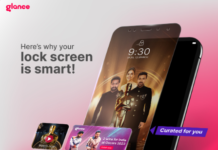Mobile development is not similar to desktop programming. When building desktop software, you can usually consider many users with high-speed internet, have been using bigger screens and can use a keyboard and mouse to engage with your pages. When developers are switching their forte from desktop to mobile development usually commit same mistakes, particularly when they don’t have enough experience in the field.
For the developers proficient in Android App Development can consider these mistakes they should when building a mobile app for Android platform.
Table of Contents
Not Using Asynchronous Design
While working with cloud apps, many people think that the user can access the internet while they’re accessing your app. However, this is not always the case that your users can access instant, high-bandwidth internet to use your mobile app. When trying to make an API call, your app can get hang.
You user may not know that short hangs can simple represent that something is running in the background. If your application needs to call a remote API or check for network resources, consider implementing asynchronous cause and threads that can perform the background action while allowing your users to engage with the app. This will prevent user confusion and stop displaying that much hated “Application Not Responding” dialog box.
Coding Application Intended To Run On High Bandwidth
Many developers ignore low-bandwidth users, as high-bandwidth is quite common in most areas. Smartphone devices still haven’t matched low to the speeds of LAN connections, therefore most of the users pay high fees while they exceed their dedicated data allocation.
When you are using images, always consider that your app users might have to cope with low bandwidth along with data charges. Images should be sized or created partially for the mobile apps. In a reduced version, the pictures can still maintain most of the quality. You should also restrict the number of images on a single screen. Using multiple images will decelerate your app’s performance.
Using UI Elements That Work With A Keyboard And Mouse More Effectively
It’s not easy to get away from routine development habits. For many years, developers have been optimizing the user interfaces (UIs) for mouse and keyboard input. It’s an entirely different world in mobile development. Consumers’ type with their thumbs and tap with their fingers. Your UI components must streamline it for your users to type a value and then tap to switch to the next element.
The UI elements should be bigger and easy to tap with their fingers. Small items are quite difficult to tap. Menus should provide options that are discoverable and need minimal scrolling. Input components are “capable”. Make sure that the font size is large enough for being legible.
Greater Battery Consumption
Most batteries in the smartphones provide the users with the battery power of half a day as an average. While some users get a full day battery. As more applications are installed on the device, phone’s battery starts to drain quicker. This is because apps run a number of processes in the background even when you are not using the phone.





